Oskar Barnack was a pioneer in photographic history. Back in 1914 he had the courage to think differently and constructed a small camera which used cine film: the Leica. He doubled the image format from 18x24 to 24x36 mm, and accordingly the horizontally positioned film made images in landscape orientation - except when the camera was turned.
Reportedly, Barnack judged the 2.3 aspect ratio to be harmonic. I do not like it, but I do not mind if others do. However, I ask myself: why do I have to live with this format as soon as I pick a camera with a sensor larger than four thirds? For sure, I can also invest a lot of money and buy a medium format camera. But why do I have to spend a lot of money and carry heavy equipment as soon as I do not want to take 2:3 images? Very simple: because it was always that way since Oskar Barnack's Leica.
But this is not the only point. I ask myself also: why do I have to turn my camera for 90 % of my images so that I can not hold it comfortably? Or buy a bulky vertical grip to make it halfway comfortable? Plus an L-grip in order to attach it reasonably easy on a tripod? The camera makers are well aware that it does not have to be that way. Already in the early days of photography plate cameras had backs which could be attached for landscape or portrait orientation, and manufacturers of medium format cameras had some thoughts about it. The cassettes of the Mamiya RB/RZ 67 and of the Fuji GX680 could be rotated. Both manufacturers forgot this when they made digital medium format cameras. Neither the Mamiya AFD not the Fuji GX645 (aka: Hasselblad H) or even the fairly new Fuji GFX-50 have rotateable backs. Strangely, even the digital back for the classical square Hasselblad 500C was arranged for horizontal rectangular pictures. If you tried to work with a focusing hood with a camera turned to vertical, you will know this is a good way for photographic adventures. All this would be easily solved if the rectangular sensors would be replaced by a round sensor.
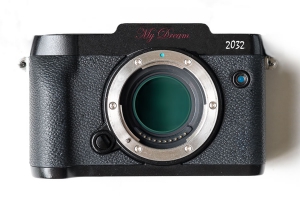
This sensor with a diameter of 28 mm covers the image circle of APS-C lenses completely. For rectangular images, part of the sensor will not be used, but it has the benefit to use different aspect ratios and orientations in a variable manner.
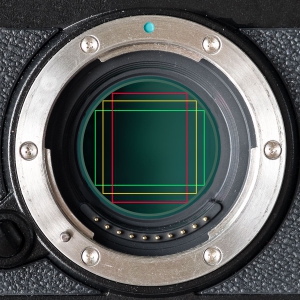

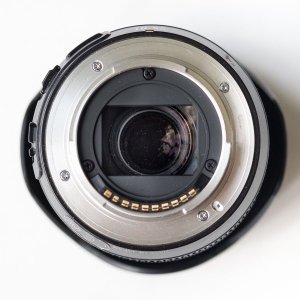
When looking at the construction of current lenses you will see that the baffles of some lenses will not allow for larger sensors. Put in a different way: even though all this is quite obvious, it is not even in the thinking of camera makers. Surprised by this? Even recognizing that a mirror and a prism are not necessary took years for the the established camera makers. It has also to do with the customers who still assume that a good camera must correspond to a 35 mm single lens reflex. I am quite sure: Oskar Barnak would have done it differently. As it is, it will remain a dream for the time to come.
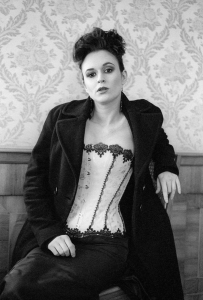
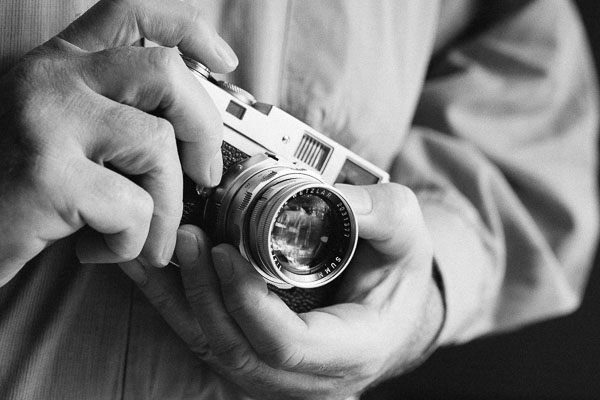
3. November 2022 Author Helmut Berghaus
Hallo Andreas,
jenseits der 80 fotografiere ich analog wieder mit Kleinbild, also 2:3, was mir auch nicht gefällt. Deshalb berücksichtige ich bei der Bildkomposition meistens etwas beidseitigen Beschnitt. Die Kameramontage beim selten benutzten Hochformat ist weniger mein Problem.
Auf die Frage nach dem Grund für das Festhalten an diesem 2:3 Format erwähnen Sie Oscar Barnacks Leica und
daß es seitdem halt immer so war.
Allerdings haben sich schon früher Andere gegen dieses unharmonische Format zu wehren versucht.
Etwa 1940 konstruierte der Ungar Dulovits eine interessante Spiegelreflex für das Format 24×32, deren Produktion
der Krieg verhinderte. Erwas später griff Nikon mit der Nikon I das Format noch einmal erfolglos auf.
Die in Ihrem Beitrag angedachten digitalen Möglichkeiten wird wohl leider die Allmacht der Industrie nebst ihren
Konstrukteuren, die nie fotografiert haben, verhindern.
Mit freundlichen Grüßen vom Niederrhein, Hemut
4. November 2022 Author ewald
Hallo Helmut,
Es ist nie zu spät, neues zu probieren!
Es wäre prima, wenn auch die Kamerahersteller das so sähen. Ich vermute wie Sie, dass sie meist nicht über ihren Horizon hinaus sehen. Aber selbst wenn sie das tun, sind die Entscheidungen wohl weniger durch Innovationsfreude geprägt als durch Gewinnaussichten und Risiken. Ein innovatives Produkt hat zwar ein hohes Gewinnpotential, aber die Kunden müssen davon erst überzeugt werden. Es ist nicht selbstverständlich, dass dies gelingt.
Der Wechsel von DSLR- zu spiegelloser Technik zeigt dies. Ende 2008 hat Panasonic die erste Kamera dieser Art vorgestellt – wohl nicht zufällig ein Hersteller, der nicht zu den etablierten Kamerahersteller gehörte. Trotz des überzeugenden Konzepts hat es zehn Jahre gedauert, bis die Marktanteile dieses Kameratyps so weit zugenommen hatten, dass Canon und Nikon unter Zugzwang geraten sind. Profitiert hat Panasonic vom Mut aber kaum. Die Marktanteile liegen bei nur einem Zehntel des Marktanteils von Canon. Es genügt offenbar, die Vorarbeit anderen zu überlassen und erst spät auf den Zug aufzuspringen.
Man kann den Kameraherstellern kaum vorwerfen, mit neuen Konzepten vorsichtig zu sein. Es liegt meines Erachtens zu einem großen Teil an den Fotografen, die lange am etablierten festhalten, auch wenn es besseres gibt. Nicht umsonst haben die meisten Kameras noch immer einen Prismenaufsatz, obwohl kein Prisma vorhanden ist.
Ich hoffe dennoch, dass 2:3 oder ein anders fixes Format in absehbarer Zeit ausgedient hat.
Viele Grüße aus dem Süden
Ewald
1. December 2021 Author Nick Lyle
Brilliant.
22. April 2019 Author Andreas
Hallo,
nun, ganz so einfach ist das mit dem runden Sensor nicht – die Sensoren werden auf großen Wafern gefertigt und dann ausgeschnitten. Das wird bei rund dann doch unpraktisch.
Was ich mir wünschte – und in die Richtung geht – wäre ein quadratischer Sensor. 36x36mm wird nicht gehen, weil dann die Bilddiagonale zu groß wird. Aber 30×30? Dann kann man dann hochkant oder quer jedes Format ausschneiden. Oder gleich quadratisch bleiben… Aber auch das wird ein Traum bleiben – also nehme ich meine Chamonix oder Fuji GX680 und drehe das Rückteil 🙂
Viele Grüße, Andreas
22. April 2019 Author ewald
Hallo Andreas,
Das ist sicherlich ein berechtigter Einwand. Vielleicht kann man ja wie beim Plätzchenbacken runde Sensoren platzsparender ausschneiden und aus den kleinen Resten Smartphone-Sensoren machen 😉
Ein quadratischer Sensor (36×36 mm für Vollformat-Objektive) war in der Tat mein ursprünglicher Ansatz. Wie Sie richtig anmerken, wird das für ein Quadrat mit der vollen Sensorfläche wegen des Bildkreises nicht reichen, aber 30×30 wäre größer als der quadratische Ausschnitt beim Vollformat und behält auch den Bildwinkel bei. Das wäre schon ein Konzept, das ich mir wünschen würde, und für APS-C-Sensoren (23,7×23,7) wäre es auch keine Kostenfrage.
Bei aller Flexibilität für verschiedene Formate ist damit eine Drehung des Bildausschnitts je nach Format aber nur eingeschränkt oder gar nicht möglich. Eine verkantete Kamera erfordert daher einen Beschnitt, der selbt bei kleinen Korrekturen recht beträchtlich ist. Ich habe schon so oft mit viel Aufwand fehlende Bildteile ergänzt, dass mir da an einer praxisgerechteren Lösung gelegen ist. Der runde Sensor mit dem Durchmesser des Bildkreises ermöglicht dies, oder auch ein quadratischer in dem dieser Bildkreis untergebracht werden kann. Der wäre für Vollformat-Pendents 43 mm Durchmesser bzw. 43×43 mm – also derzeit nicht ganz billig. Für APS-C Pendents mit 28,4 mm Durchmesser bzw. 28,4×28,4 mm aber nicht teurer als ein Vollformat-Sensor.
Auch größere Sensoren wie 33×44 mm für die sogenannten Mittelformatkameras (eher Kleinbild plus) müssen nicht unbezahlbar sein. Neuerdings bietet Fujifilm für die GFX einen Vollformat-Modus, der den Ausschnitt auf 24×36 mm horizontal beschränkt. Für eine vertikale Ausrichtung reicht es nicht ganz, aber für weniger langgestreckte Seitenverhältnisse würde es reichen. Obwohl die Kamera für 3:4 ausgelegt ist, hat man aber offenbar nicht daran gedacht, dass dies auch für andere Seitenverhältnisse im Vollformat-Bildkreis interessant sein könnte. Damit liesse sich nicht nur ein Quadrat oder eine vertikale Ausrichtung 3:4 realisieren sondern teilweise sogar eine automatische horizontale Ausrichtung. Am Horizont der Konstrukteure (oder des Marketings) ist dies aber offenbar nicht. Mit der GFX lässt es sich freilich leicht umgehen, indem man den Ausschnitt vom vollen Format selbst festlegt.
Eine Chamonix habe ich leider nicht, aber ich habe sie mir auf der Photokina angesehen. Die Kameras haben eine ausgezeichnete Fertigungsqualität, besser als meine Shen-Hao die ich häufig einsetze. Und die GX680 ist ebenso eine hervorragende Kamera- nicht nur wegen des drehbaren Rückteils. Mit dem Polaroid-Rückteil kann man sogar 8×8 cm fotografieren – wenn auch mit abgeschnittenen Ecken 😉
Viele Grüße
Ewald